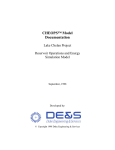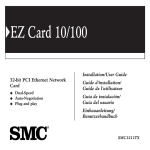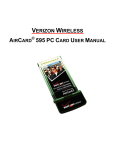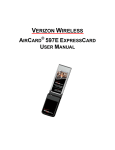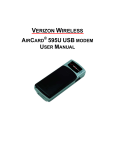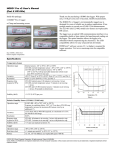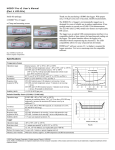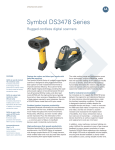Download Manhattan Line Interactive UPS
Transcript
line interactive rackmount uninterruptible power supply USER MANUAL MODEL 168205 MAN-168205-UM-0606-08 Thank you for purchasing the MANHATTAN® Line Interactive Rackmount Uninterruptible Power Supply, Model 168205. This pure sine wave uninterruptible power supply (UPS) protects your computer hardware from physical damage and will provide emergency battery backup power to prevent data loss in the event of power problems. The main features include: • Advanced protection against power outages, sags, surges and line noise • RISC-based microprocessor maintains proper charge, provides consistent power output and helps extend battery life • Built-in expansion slot for MANHATTAN SNMP Module 168236 • Automatic voltage regulation (AVR), cold start capability and diagnostics • 1120 Joules telephone/fax and network surge protection • Circuit breaker protection offers quick recovery from overload and short circuit events • LED and audible alert system and power management software help monitor critical functions • $100,000 connected equipment guarantee (US and Canada only) • Lifetime Warranty, UPS; Three-year Warranty, battery Package contents: • Line Interactive Rackmount UPS Model 168205 (2000 VA / 1400 W). • Power Management Software CD (Windows 98/SE/Me/2000/XP compatible). • Cables (120 V): USB/RJ-45, 6 ft. (1.8 m); RJ-11, 6 ft. (1.8 m); power cord with L5-30P locking plug, 6 ft. (1.8 m) • Cables (220 V): USB/RJ-45, 6 ft. (1.8 m); RJ-11, 6 ft. (1.8 m); Schuko/C13, 6 ft. (1.8 m); C13/C14, 6 ft. (1.8 m) • Power cable, 6 ft. (1.8 m) • Mounting Brackets • User Manual 2 safety instructions Upon receipt of your MANHATTAN Line Interactive Rackmount UPS, first remove and inspect the product for damage. If any damage is found, notify your dealer. Keep the carton and the packing foam in the event the product must be returned to the factory for service (damage sustained in transit when shipped from the user are not covered under warranty). • Place the device indoors in an area that has adequate airflow and is free from excessive dust. Do not allow the UPS to be exposed to moisture, rain, excessive heat or direct sunlight. • Use of this product in life-support applications — where failure of this device can reasonably be expected to cause failure of life-support equipment or to significantly affect its safety or effectiveness — is not recommended. • Always disconnect the input power cord from the wall outlet before replacing the battery. • Do not dispose of the battery in a fire, as the battery may explode. • Do not open or mutilate the battery, as it contains a toxic electrolyte harmful to both the skin and eyes. • Proper disposal of the battery is required. Refer to your local laws/regulations regarding battery disposal. • To avoid personal injury, use tools with insulated handles to replace the battery. Due to energy hazards, remove wrist watches and jewelry such as rings when replacing battery. operation & installatioN This Rackmount UPS can protect your equipment from surges, spikes, blackouts, brownouts and line noise. When AC power is present and the UPS is on, it continues to charge the battery and provide the power to the equipment directly from the AC line. The battery can provide stable power to complete your work, save your data and safely shut down your system when the utility power has failed. 3 The UPS is simple to operate and install. Following are the steps to connect equipment to the UPS. Conditions Do not operate the UPS in an environment where the ambient temperature is outside the limits given in the Specifications section of this manual. Connection to the Utility Power Plug the UPS into an electrical outlet. Do not plug it into an outlet that already uses a heavy electric load (e.g., an air conditioner, refrigerator or laser printer). Check the product specification in this manual for temperature conditions. 120 V AC Version The 120 V AC version of the Rackmount UPS is furnished with a six-foot line cord terminated with a standard NEMA 5-15P three-pronged plug. The UPS must be plugged into a two-pole, three-wire grounding receptacle. If an extension cord must be used, use a three-wire grounding type rated at least 20 Amps. Plug the UPS into a two-pole, three-wire grounded receptacle only. Avoid using extension cords and adapter plugs. 220 V AC Version The 220 V AC version is furnished with one output power cord for connection to computer equipment having IEC 320 male appliance couplers at their input. In most cases this will not be a problem, as the input cord that currently powers your computer equipment may be swapped with the supplied output cord. Hence, the swapped output line cord can be used instead as the input line cord for the UPS. 4 Initial Battery Charging The UPS is shipped from the factory with its internal battery fully charged. However, the battery may lose some charge during shipping and storage. The battery should be recharged before conducting the following test for proper operation and to ensure the UPS will provide expected run time. The UPS automatically charges the battery whenever the UPS is plugged in (the On/Off/Test switch doesn’t have to be turned on). The battery will fully recharge when the UPS is left plugged in for at least eight hours. (Also see Battery Connection, P. 11.) Connecting Your Equipment to the UPS To ensure that your computer equipment will be protected during a utility failure and that you receive expected run time, it is important that the total power needs of the equipment not exceed the capacity of the UPS. (See the Overload Instruction chart below: Total power for Model 168205 should be no more than 1320 watts.) Once you have determined that your equipment and the UPS are compatible, plug your equipment into the rear panel output receptacles of the UPS. Overload percentage (%) On AC mode 110% 125% Output short Overload percentage (%) On DC mode 110% 120% UPS Status Alarm sounds continuously but the UPS won’t shut down due to this overload condition. UPS shuts down and alarm will remain on for 10 sec. Circuit breaker trip. UPS Status UPS will shut down after 10 sec. continuous beeping. UPS shuts down at once. 5 Test for Proper Operation Push the On/Off/Test button to turn on your computer equipment. The yellow indicator at the front panel should be illuminated and your equipment should operate normally. To test the operation of the Rackmount UPS, simply unplug its input cord to simulate a utility blackout. During this time, the UPS will emit one beep once every 10 seconds and the yellow LED remains lit to remind you that your equipment is operating from a source of power that is limited in duration. Restore power to the UPS by plugging in the line cord. Repeat this test four or five times to ensure proper operation. Another way to test the operation of the UPS is to simply press and hold the On/Off/Test button for four seconds (four alarm beeps), and then release it to run a 10-second self-test routine. The UPS will transfer your equipment to power derived from its internal battery and run a self-test. controls & iNdicators 1.On/Off/Test Button: The On/Off/Test button controls power to the UPS and its output receptacles. Press and hold the button for one second (the alarm will sound one short beep) to turn the unit on or off. Press and hold the button for four beeps when utility power is normal and the UPS will simulate a utility outage and perform a self-test, a convenient way to test the UPS battery. During an actual utility power outage, the UPS will emit one beep once every 10 seconds. 2.Mute Switch: Press and hold this button for one second and the UPS will turn off the alarm after a short beep. Press and hold this button for another second and the alarm function is restored after a short beep. 3.On-line/Booster and Buck LED: When the unit is in the AC normal mode, this green LED indicator will 6 be constantly on. It will be off when the unit is off. When the automatic voltage regulator (AVR) is operating, this LED will blink. 4.On-battery LED: In On-battery operation, this LED will be constantly on and the UPS will sound once every 10 seconds till the unit reaches its low-battery warning level or the unit returns to AC normal. 3 4 5 6 7 1 2 5.Overload LED: When the unit senses an over-current condition in the output, this yellow LED will stay on and the alarm will sound continuously to indicate an overload. See the Troubleshooting section to recover the UPS from an overload situation. 6.Weak Battery/Internal Fault LED: When the battery goes bad or becomes weak or disconnected, this red LED will light, indicating the battery must be replaced. The alarm will beep three times at one-minute intervals if the battery is bad or disconnected, and will beep once a second if the battery is low. The LED and alarm will remain in these states until the battery is replaced. If the LED lights up and the alarm sounds: 1.Allow the UPS to charge four to six hours. 2.Test the battery by turning the UPS off and back on again. 3.If the LED lights and the alarm sounds again, the battery must be replaced. This LED will also light up when the unit has an internal fault. It remains off when all functions are normal. 7. Load LEDs: In AC or DC mode, the four LEDs indicate the load percentage on the UPS output. Each LED indicates 25% of UPS load capacity; all four LEDs lighted indicates 100% of UPS load capacity. 7 8.AC Input Power Cord: Plug the AC power cord into your power source. (The 220 V version features an AC input socket.) 10 12 11 10 9 9. Input Circuit Breaker: This protects equipment plugged into the outlet against short circuits or 8 17 16 15 14 13 10 system overload. The UPS will trip the breaker when loads 120 V version shown. Outlets/indicators for 220 V version vary in number and type. See Specifications. exceed the UPS’s capacity. If the circuit breaker trips, unplug at least one piece of equipment from its UPS connection and reset the breaker by pressing the button back in. If the AC input current is much higher than what the circuit breaker can regulate, the circuit breaker may trip. Once the breaker is tripped, the UPS will attempt to power the load using its internal power source. If the UPS detects an overload at this point, turn off the UPS and decide which equipment will be left unprotected. Reset the breaker after the overload or short circuit is released, then restart the UPS. NOTE: Most circuit breaker trips are due to overload conditions. 10.Output Circuit Breakers: Six battery output sockets and two bypass output sockets equipped with breakers protect against overcurrent on the output, tripping when an overload occurs. 11.Surge Protection Outlets: These provide full-time protection against surges and spikes. Plug any peripheral equipment that doesn’t require power during a utility power failure into these outlets and prevent power problems traveling through your system via unprotected peripherals. 8 12. Battery Backup & Surge Protection Outlets: These provide instantaneous backup power to your equipment for temporary uninterrupted operation during the utility power failure. 13. Site Wiring Fault (120 V version only): The LED will be illuminated if the UPS detects a fault in the wiring of utility power outlets. There are three possible reasons for a wiring fault: reversed polarity, an overloaded neutral or a missing ground wire. 14. R J-11/45 Phone/Network Surge Suppression: The RJ-45/11 provides protection against surges on the telephone and data lines. Plug either a 10 Base-T network cable or single telephone line into the UPS’s In jack. Plug the telephone line or the network cable from your equipment into UPS’s Out jack. NOTE: This connection is not needed to properly use the UPS. 15. Emergency Power Off (EPO) Port: This lets you turn off the UPS remotely using the provided cable. Connect the EPO port of your UPS to a user-supplied normally closed or normally open switch. This will allow connected loads to immediately be de-energized from a remote location without switching to battery operation. 16. RS-232 or USB Port: This connects an RS-232 or USB cable to the computer to use Power Saving Plus (with RS-232 cable) or Power Saving Plus II (with USB cable) software to automatically save the files and shut down the computer if the utility power fails. NOTE: This connection is optional and is not needed to properly use the UPS. 17. SNMP Slot (Ready), SNMP Card (Optional): The built-in expansion slot is for an optional SNMP card for network management/monitoring. NOTE: The SNMP card an option. The UPS can work properly without the SNMP card. 9 indicator table The UPS has both visible (LED) and audible (alarm) status indicators. The LED numbers correspond to the Indicator images on page 7, with the Load Percentage LEDs included at the bottom of the chart. On-line/ Weak Battery Booster & On-battery Overload Internal Buck LED LED LED Fault LED Green (3) Yellow (4) Yellow (5) Red (6) Alarm On Blinking X X X X X X X On X On X X 1 of 4 2 of 4 Green LEDs Green LEDs 10 On On On On X On On On X X X X X X On X X X On X On X 3 of 4 4 of 4 Green LEDs Green LEDs X X On On X X X On UPS Status Indication X X 1 beep @ 10-second intervals X 1 beep @ 1-second intervals 3 beeps @ 1-minute intervals Constantly on AC mode AVR mode DC mode Internal fault Low battery Battery failure Overload Load % UPS Status 25% 50% 75% 100% Load percentage battery connection To preserve the life of the battery, the Rackmount UPS ships with the battery disconnected. Once the battery is connected following the steps below, let the UPS charge for 24 hours without a load. 1.Remove the faceplate by first pulling open the latch on the front-left of the UPS (where the MANHATTAN logo is, as shown at top right), then loosening the two recessed screws that are now visible. 2.With the faceplate removed, connect the two pairs of cables. NOTE: The two connectors only fit together one way, so you can’t make a wrong connection. 3.Replace the faceplate. 11 mounting procedures 12 TroubleshootinG Symptom Possible Cause Action to Take The UPS will not turn Output short or overload shutdown. Reduce the amount of connected equipment and on. reset the circuit breaker(s). Computer interface or accessory Disconnect the interface. problem. Weak Battery/Internal Weak batteries. Replace the batteries. Fault LEDs are lit; the UPS Internal UPS system fault. Return for service. emits a constant tone. The UPS beeps and runs Sags or spikes have been detected No action is needed: This is normal operation as the on the batteries even and the UPS is briefly transferring UPS protects against abnormal utility voltages. though normal line connected equipment to its backup power is present. power source. The input circuit breaker tripped. Reduce the load and reset the circuit breaker. Bad input connection. Check the connection. The UPS doesn’t have Low battery condition. Disconnect any equipment and recharge the the expected run time; battery for eight hours. low battery warning is Bad battery. Return for service. indicated. The check battery LED The UPS is shut down and the Allow the UPS to return to normal status once power is on; the UPS isn’t battery is discharged due to an is restored and the battery regains a sufficient charge. operating. extended power outage. 13 Specifications Note: Specifications may change without notice. Available in 120 V (NEMA) and 220 V (IEC) models • Outlets: 8 NEMA (120 V), 6 backup + surge only / 2 surge only; 7 IEC (220 V), 6 back-up + surge / 1 Schuko surge only • Times: - Backup: 5 minutes at full load; 12 minutes at 50% load; 40 minutes at varying loads (typical with PC and 15” LCD monitor at 85 W) - Recharge: 8 hours typical (10 hours maximum) - Transfer: 4-8 ms typical (10 ms maximum) • Communications ports: RJ-45 (USB/RS232 interface), Emergency Power-Off (EPO) • Telephone/fax/network ports: RJ-11/RJ-45 ports (1 in / 1 out), surge protected • Nominal voltage: input, 115 V (230 V), output 115 V (230 V) • Voltage range: input, 115 V +20% / –25% (230 V +20% / –25%) • Frequency range: 50/60 Hz (auto sensing) • Voltage regulation: 115 V +/– 13% • Noise filter: full-time EMI / RFI filtering; 100 kHz to 10 MHz • Frequency regulation: 50/60 Hz +/– 1% • Waveform: pure sine wave • Battery: capacity, 12 V / 7 Ah x 4; type, sealed and maintenance-free (lead acid) • Temperatures (°C): operation, 0 to 40; storage, -20 to 40 • Operation relative humidity: 0 to 95% (non-condensing) • LED indicators: Online, Overload, On Battery and Bad Battery • Audible alarms: Overload, On Battery, Low Battery 14 WARRANTY INFORMATION Coverage For the original purchaser of this MANHATTAN Line Interactive Rackmount Uninterruptible Power Supply residing in the United States or Canada, the device itself features a lifetime warranty covering material and workmanship (with a threeyear warranty on the battery). Should the UPS fail, it will either be repaired or replaced (manufacturer’s option). Should UC-, UL-, CSA- or CE-listed electronic equipment connected to the MANHATTAN Line Interactive Rackmount Uninterruptible Power Supply be damaged by power or phone line transients such as spikes or surges, the manufacturer has the option of repairing or replacing the damaged equipment or keeping the damaged equipment and paying fair market value for it (not to exceed a total of $100,000). This warranty does not cover a) damage caused by improper installation, repairs, servicing or alterations; b) damage due to the improper packing or shipping of items returned to the manufacturer; c) damage to electronic equipment that is not UC-, UL-, CSA- or CE-listed; d) damage to UC-, UL-, CSA- or CE-listed equipment not caused by power or phone line transients such as spikes or surges; e) damage caused by a failure to use properly wired and grounded electrical outlets, telephone service and, if applicable, cable TV service; f) damage caused by a failure to install primary protection devices for power and telephone service equipment; g) damage caused by cable TV transients; or h) damage caused during any use of this device for which it was not intended. Note: Some states do not allow the exclusion or limitation of incidental or consequential damages, which means the above may not apply. This warranty gives you specific legal rights. You may also have other rights, which vary from state to state. Implied Warranty Implied warranties, including the implied warranty of merchantability and the implied warranty of fitness for a purpose, end when the original purchaser no longer owns the product and three years from the date of purchase for the battery. Note: Some states do not allow time limitations on implied warranties, which means the above limitations may not apply. 15 MANHATTAN offers a complete line of PC Components, Peripherals, Cables and Accessories. Ask your local computer dealer for more information or visit us online at ® www.manhattan-products.com Copyright © MANHATTAN All products mentioned are trademarks or registered trademarks of their respective owners.

















